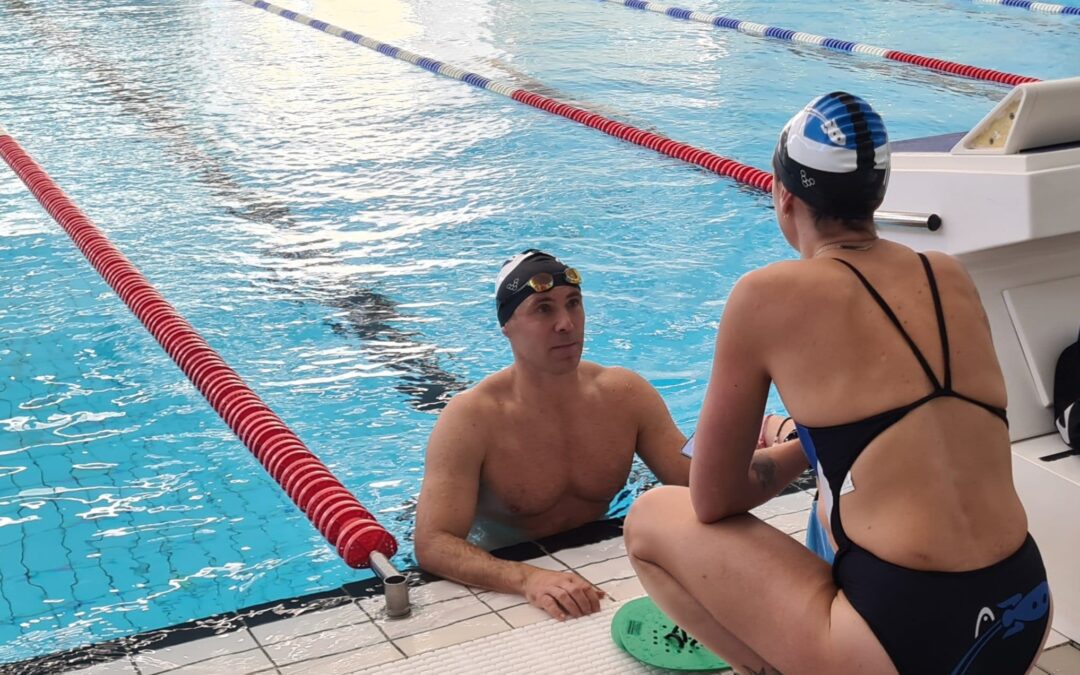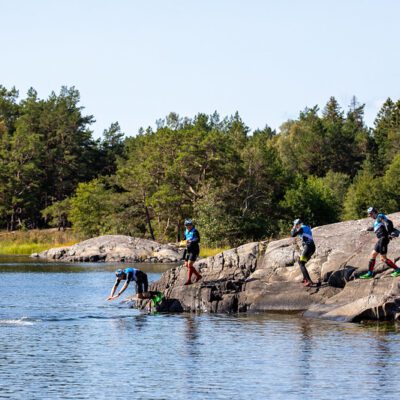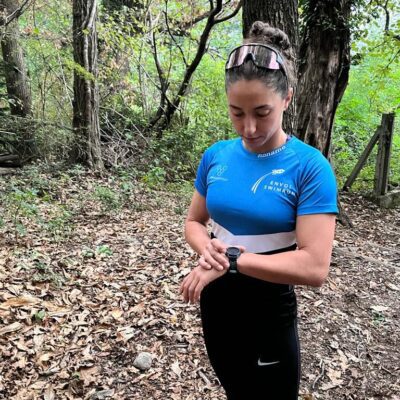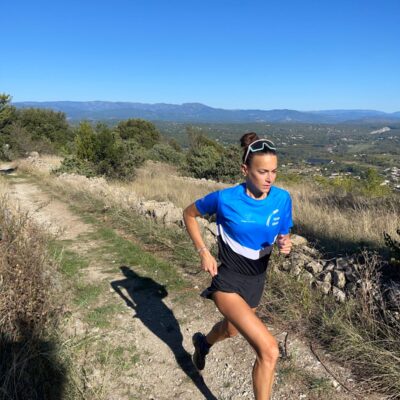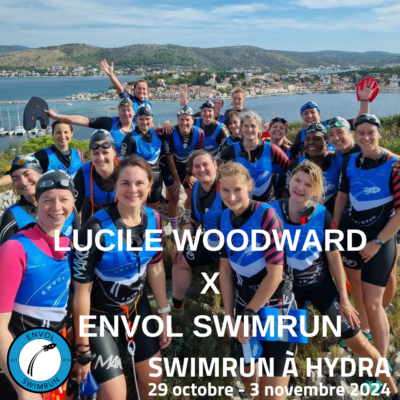Written by coach Tom Jenkinson
What is CSS?
Critical Swim Speed (CSS) represents the highest intensity that is sustainable for a prolonged duration, without eliciting maximal oxygen uptake (V02max) it is just above the Lactate Threshold (LT2) and Maximal Lactate Steady State (MLSS) but lower than the velocity at VO2max.
In this example Swimmer 3 is sprint trained, faster over shorter distances but can not sustain as high a percentage of that speed over longer distances. Swimmer 2 “appears” to be the slower swimmer and in regular Masters training might even think they are – but actually is the best endurance trained and has the best CSS pace!

How do I get a CSS value?
To get a CSS value you do two maximal time trials of 400m and 200m:
- Begin with a 400m time trial, starting from a push (not a dive), and note down your time.
- Take sufficient rest or recovery after the 400m trial to fully recover and be prepared for a maximum effort in a 200m time trial.
- Swim a 200m time trial, starting from a push (not a dive), and record your time.
You then use a CSS calculator to get your CSS Pace and then enter this value as the Threshold Pace in Training Peaks on the desktop version Under Settings -> Zones. When they are set you will see them in the mobile app too.
For the mathematicians CSS is obtained from the modeling of the distance-time relationship using the two-parameter model and is the angular coefficient of the linear regression between the distance (x-axis) and the time (y-axis).
The zones we use are calculated as a percentage of Threshold Pace (CSS)
- Zone 1 = 77 to 87%
- Zone 2 = 87 to 94%
- Zone 3 = 95 to 98%
- Zone 4 = 99 to 104%
- Zone 5 = >105%
Can you give me a real example?
So for a swimmer with CSS = 1:50/100 the zones in Training Peaks would look like this:
| Swim Speed Training Zones | Feel / Perception | Swim Speed / 100 meters |
| 1 | Easy (recovery & drills) | 02:06 – 02:23 |
| 2 | Steady (up to LT1) | 01:57 – 02:05 |
| 3 | Moderately Hard (sweet spot) | 01:53 – 01:56 |
| 4 | Hard (around LT2) | 01:47 – 01:52 |
| 5 | Very Hard (VO2 Max and above) | 01:39 – 01:46 |
What is the benefit for my swim training?
If your ambition is to be a better distance swimmer, it is time to train like one!
- Turning you into “a diesel engine”
- As a distance swimmer, aerobic capacity is key
- Anaerobic speed work is a complement, not a replacement
- Many swim systems use CSS but Swim Smooth (Paul Newsome) popularized CSS-based training at or near your threshold (short rests) which we could also label sweet spot training.
- This is different from traditional high-volume competitive swimming or master swimming programs
- A key factor in Paul’s philosophy was the amount of available training time for him and his athletes
- This means fewer total hours but some of those with razor focus on training at sweet spot intensity
What is Sweet Spot intensity?
Sweet-Spot – where you are placing your body under sustained stress, without inducing high levels of fatigue… in other words the sweet spot between intensity and volume.
In the zoning system above this is focused on Zone 3 where…
- You train specificity – neuromuscular adaptations and skill acquisition at this “race” pace.
- On a cellular level, training at sweet-spot increases your mitochondria density – the mitochondria are the powerhouses of the cell and, by increasing your mitochondria density, you’re making your body able to create energy more easily.
And given limited total training time and access to pools…
- If you’re limited on time, you want to maximize what you do have.
- Sweet-spot offers the most bang for your buck in terms of training time.
Rather than slogging away for hours in the pool, sweet-spot training produces similar physiological adaptations and training effects from a much shorter session.
“You might not like it, but it is good for you!”
Example – What is the best way to pace this main set?
1800m 2x Though
- 1 x (25 FS) :10RI
- 1 x (50 FS) :10RI
- 1 x (75 FS) :10RI
- 1 x (100 FS) :10RI
- 1 x (125 FS) :10RI
- 1 x (150 FS :10RI
- 1 x (175 FS) :10RI
- 1 x (200 FS) :10RI
Which option is best with the objective of optimal aerobic stimulus?
- Go out at Z4/5 but then do most of the duration at Z1/2 pace
- Have a nice comfortable Z2 swim
- Pace consistently at Z3 ≈CSS+2 to +5
- Skip the rest and do two continuous 900m swims
Spoiler – Answer 3 is the correct one! “If you are swimming less than 5x per week, having easy swims is a waste of time” Coach Joel Filliol
I have seen people using beepers (FINIS Tempo Trainer) to pace sets. How does this work?
There are two common pacing protocols CSS+ /100 and RM Sets:
CSS+ /100 is a STAY ON PACE protocol
- CSS+0 would mean swim at your CSS pace/100
- CSS+5 would mean swim at your CSS pace/100 +5s
- Example; swimmer A has a CSS pace of 1:40/100 or 100 seconds
- Take 100 and divide by 4 to give you 25 seconds
- To pace at CSS+0/100 In mode 1 set the timer for 25s and then aim to hit the beep every 25m as you touch the wall
- For every whole second (i.e., CSS+1) add 0.25 to the timer for a 25m pacing prompt.
RM (Red Mist Cycles) is a START-ON (start-time) protocol
- Where you swim faster than the beep to earn rest
- The same swimmer A takes her CSS+0 value and divides by 2 to give 50s (RM0)
- RM5 would be start every interval on 55s
- To start on RM5, in mode 2 set the timer on 55
- Beet the beeper to gain rest and start on the next beep
Are there any downsides to CSS training?
- Getting the pacing right on the time trials can be difficult for less experienced swimmers which can give inaccurate CSS values.
- Not recovering enough and therefore getting a slower-than-possible time on the 200 would give you a faster predicted CSS. This is a common issue!
- Swim training at a high % of threshold pace can be perceived as “stressful”and takes away the enjoyment of swimming for some people whilst others like it.
- This kind of sweet spot training is more appropriate for more experienced swimmers (let’s say 1:45/100 or faster). It could be more beneficial for developing swimmers to train at slower paces where they can have more focus on developing their technique… technique and swim skills can have a greater impact on these swimmers’ development than focusing on “swim fitness”.
How is it incorporated in the Envol Plans?
- Your threshold “CSS” pace is important as it is used for the pace Zoning system in Training Peaks, you should retest approximately every 8 weeks, and potentially more frequently if you feel your swimming is improving rapidly.
- If you don’t put a threshold pace in Training Peaks to establish these zones you can still swim on the feel/precision of effort.
- CSS is referenced in some of the sessions so it is important you understand the concepts behind it.
- Instead of a fixed pace e.g., CSS+2/100 – the zones give you a span which allows you some flexibility to adjust depending on how you are feeling that particular session, and to not beat yourself up if you can’t meet a very precisely prescribed pace target in a given session.
- If your primary focus is being competitive at OW swim events (no gear) then Z3 FS swimming should be a prioritized aspect of your swim training.
- Many of the swim sessions incorporate fartlek multi-pace swimming e.g. Xm EASY + Ym HARD (and vice versa) this has the intention of you being able to focus on your technique during the easy duration and then developing your technique to be able to “hold on” and develop your skills to be able to swim faster.
- Perceived exertion; easy, steady, hard… is used in many of the sessions as it is relevant across different sets with different combinations of gear as our workouts are intended to develop our swimrun swimming performance and not only our no-gear FS pace.
Final words from Coach Wayne Goldsmith
“Swimming fast is about the swimmer’s capacity to maintain maximum speed, outstanding technique, and brilliant skills. You don’t learn this by swimming a lot of laps at mediocre speeds with terrible technique and awful skills.”
Train Hard and Have Fun. /Tom and Nico.

Have fun and train hard!
Did you know that Envol also provides single discipline plans for distance running and open water swimming? For more information contact info@envolcoaching.net

